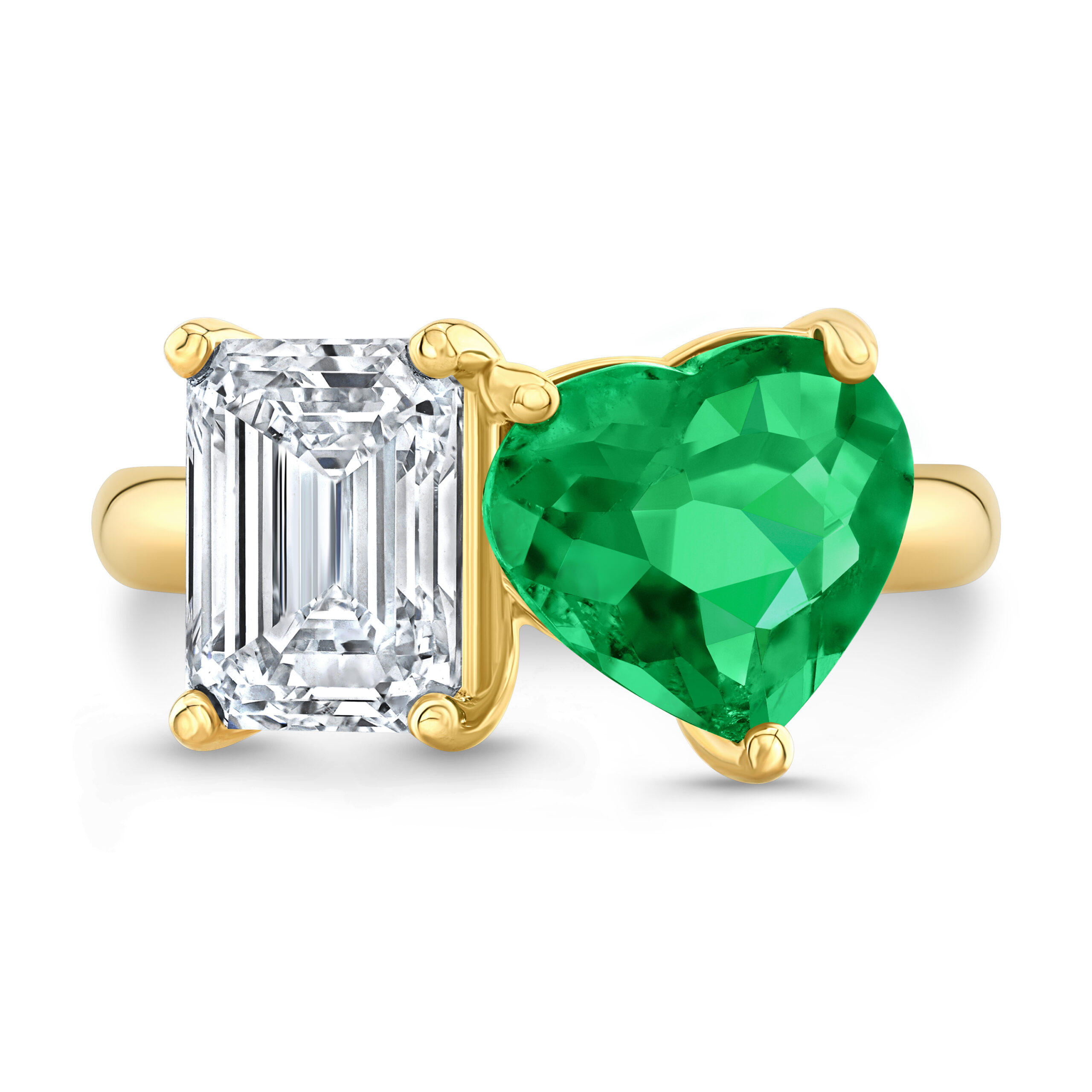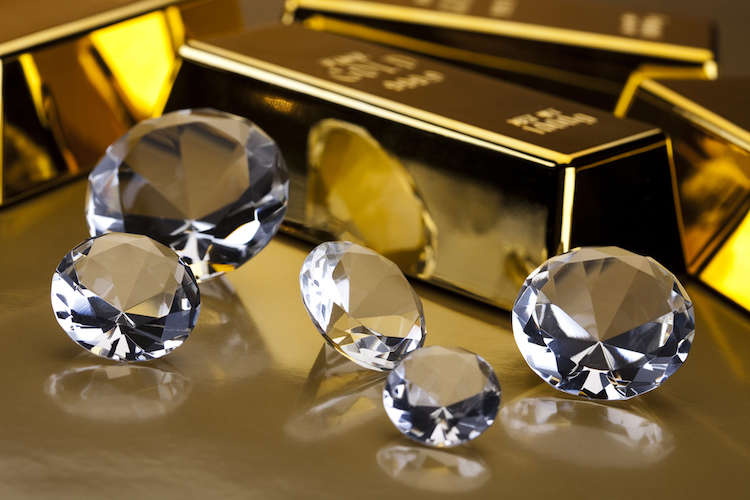In the dazzling world of gemstones, lab-grown diamonds have emerged as a captivating alternative to their mined counterparts. But when it comes to selecting the perfect lab diamond, understanding the Four Cs – Cut, Color, Clarity, and Carat Weight – remains paramount for maximizing sparkle and value. While these factors hold significance for both mined and lab-grown diamonds, there can be subtle nuances in prioritizing them for lab-grown stones.
Table of Contents
Decoding the Diamonds 4Cs for Lab-Grown Diamonds:
Cut: The Unsung Hero of Brilliance
Unlike mined diamonds, which can exhibit variations in natural formation, lab diamonds are meticulously crafted under controlled conditions. This allows for a higher degree of consistency in their proportions and symmetry. However, cut quality is still the single most critical factor in determining a lab diamond’s brilliance, fire (play of colors), and scintillation (sparkle).
- Prioritize: Ideal or Excellent cut grades. These ensure optimal light performance, maximizing a lab diamond’s brilliance and fire.
- Go Beyond: Explore cut grades like “Super Ideal” or “Hearts and Arrows,” which represent the pinnacle of light performance, especially for round brilliant cuts.
Color: Unveiling the Diamond’s Inner Light
Lab diamonds, much like mined diamonds, exist on a color spectrum ranging from colorless (most desirable) to faint yellow or brown hues. While colorless lab diamonds command a premium, near colorless stones can offer exceptional value, particularly when set in white gold or platinum.
- Prioritize: GIA or IGI color grades of D-F (colorless). These represent the top tier and boast the highest brilliance potential.
- Consider: G-H (near colorless) grades, especially if budget is a concern. These stones display minimal warmth and can appear colorless to the naked eye when set in white metals.
Understanding Fluorescence: Some lab diamonds exhibit fluorescence, a phenomenon where the stone emits a faint blue glow under ultraviolet light. While not impacting brilliance, some prefer non-fluorescent stones. Discuss fluorescence with your jeweler to determine your preference.
Clarity: Embracing the Natural Beauty
Similar to mined diamonds, what matters in the diamonds 4cs or external imperfections called inclusions and blemishes. These are typically microscopic and have minimal impact on the overall beauty of the stone.
- Prioritize: VS1 or VS2 (Very Slightly Included) clarity grades. These offer an excellent balance of beauty and value, with inclusions barely visible to the unaided eye.
- Explore: SI1 or SI2 (Slightly Included) grades for significant cost savings. Inclusions might be slightly more noticeable under close scrutiny, but the difference can be negligible for the average eye.
Remember: Clarity is more noticeable in larger carat weights. Prioritize higher clarity grades (VS1 or higher) for stones exceeding 1 carat.
Carat Weight: Size Matters, But Not Everything
Carat weight simply refers to the diamond’s weight, directly translating to its size. While a larger stone is undeniably impressive, it’s crucial to consider the interplay between carat weight and other Cs. A well-cut 1 carat diamond will radiate more brilliance than a poorly cut 2 carat stone.
- Prioritize: Balance. Consider the ideal size that complements your setting and budget. A well-proportioned stone with excellent cut will deliver more brilliance than a larger stone with a subpar cut.
- Explore Cut Optimization: Discuss cut quality with your jeweler. A slightly smaller diamond with a superior cut might deliver a more dazzling display than a larger stone with a less optimal cut.
Additional Considerations for Lab Diamonds:
- Certification: Always purchase a lab diamond with a grading report from a reputable gemological laboratory like GIA or IGI. This report verifies the stone’s authenticity, cut, color, clarity, and carat weight.
- Ethical Considerations: Lab diamonds are a conflict-free and environmentally friendly alternative to mined diamonds. They offer the same brilliance and beauty without the social and environmental concerns associated with mining.
Conclusion: The Perfect Lab Diamond Awaits
By understanding the Diamonds 4Cs in the context of lab diamonds, you can make an informed and confident decision. Prioritize cut for brilliance, consider near colorless grades for value, and choose clarity based on visibility and budget. Remember, a well-cut lab diamond, even at a slightly smaller size, can outshine a larger stone with a poor cut. With careful consideration of these factors, you’ll soon be holding the perfect lab diamond that reflects your personal style and budget.










